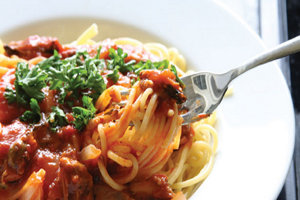
|
As first reported in the June 19, 2011, Daily Star (Lebanon), the research team focused on a popular Italian restaurant in the Southwestern U.S. Two sets of forks were set to work--one, the larger, held 20% more food than the fork usually used in the restaurant, and the smaller held 20% less.
It was found that diners who used the bigger fork ate less of their food than those who used the smaller one. Interestingly, the results were the exact opposite, when the same test was conducted in a lab setting. It seems the researchers, whose results were published in the Journal of Consumer Research, concluded there are different motivations when people eat in a restaurant or a lab.
In a restaurant, diners want to “satiate their hunger…because of this well-defined goal, they are willing to invest effort and resources to satiate their hunger.” In a lab, however, participants who were told they were taking part in a study did not have that same motivation. Restaurant diners seemed to feel the small fork gave them a “feeling that they were not making much progress,” meaning they ate more of the food on their plate than the large-fork group, the researchers reasoned.
What does this mean to R&D labs and consumer research teams? If restaurant patrons’ motivation is different from the motivations of diners in a lab tasting session, possibly more research on this topic is needed to achieve accurate insights into the consumer mindset. pf
